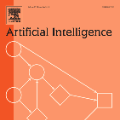Study Design: The study outlines the development of an autonomous AI system for chest X-ray (CXR) interpretation, trained on a vast dataset of over 5 million X rays sourced from healthcare systems across India. This AI system integrates advanced architectures including Vision Transformers, Faster R-CNN, and various U Net models (such as Attention U-Net, U-Net++, and Dense U-Net) to enable comprehensive classification, detection, and segmentation of 75 distinct pathologies. To ensure robustness, the study design includes subgroup analyses across age, gender, and equipment type, validating the model's adaptability and performance across diverse patient demographics and imaging environments. Performance: The AI system achieved up to 98% precision and over 95% recall for multi pathology classification, with stable performance across demographic and equipment subgroups. For normal vs. abnormal classification, it reached 99.8% precision, 99.6% recall, and 99.9% negative predictive value (NPV). It was deployed in 17 major healthcare systems in India including diagnostic centers, large hospitals, and government hospitals. Over the deployment period, the system processed over 150,000 scans, averaging 2,000 chest X rays daily, resulting in reduced reporting times and improved diagnostic accuracy. Conclusion: The high precision and recall validate the AI's capability as a reliable tool for autonomous normal abnormal classification, pathology localization, and segmentation. This scalable AI model addresses diagnostic gaps in underserved areas, optimizing radiology workflows and enhancing patient care across diverse healthcare settings in India.
翻译:暂无翻译












